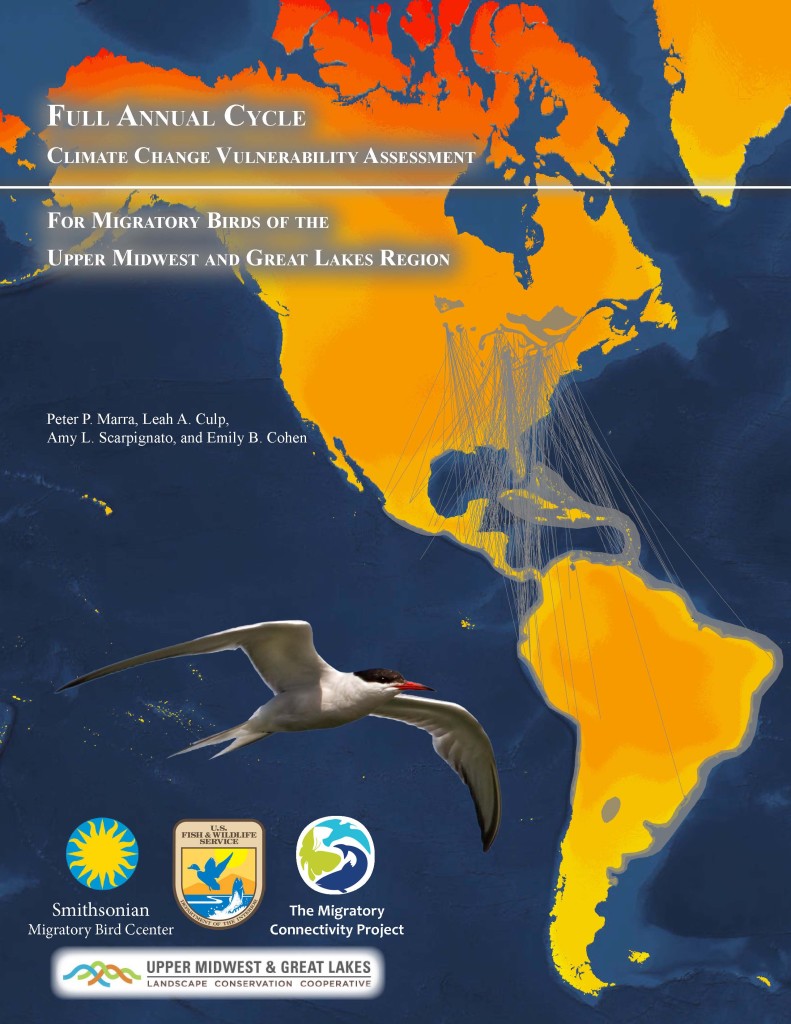Climate change poses a serious challenge to the world’s flora and fauna, and many of us are wondering what will happen to our native species. On the surface, migratory animals may appear to be more resilient simply because they’re so mobile. It’s not that simple, however:
- Their climatic and ecological requirements are complex, spanning vast distances,
- They’re exposed to a wide range of variables as they move across continents, and
- Climate change could alter ecological conditions at any point along the way.
Ideally, risk should be assessed throughout an animal’s entire annual cycle, but the complexity of migration makes this difficult and it’s rarely (if ever) done. The Smithsonian’s Migratory Bird Center wants to help remedy this problem, and they’ve developed a method that incorporates migratory connectivity to assess full annual cycle vulnerability to climate change. Their report (left) demonstrates the method for 46 species of migratory birds that breed in the Upper Midwest and Great Lakes region. Results were interesting! Here are some highlights:
- Regarding drying trends, climate change on the Mexican and Caribbean non-breeding grounds was most relevant,
- Regarding warming trends, climate change on the breeding grounds was most relevant, and
- For some species, there appears to be no reprieve—they’ll be vulnerable throughout their annual cycle.


